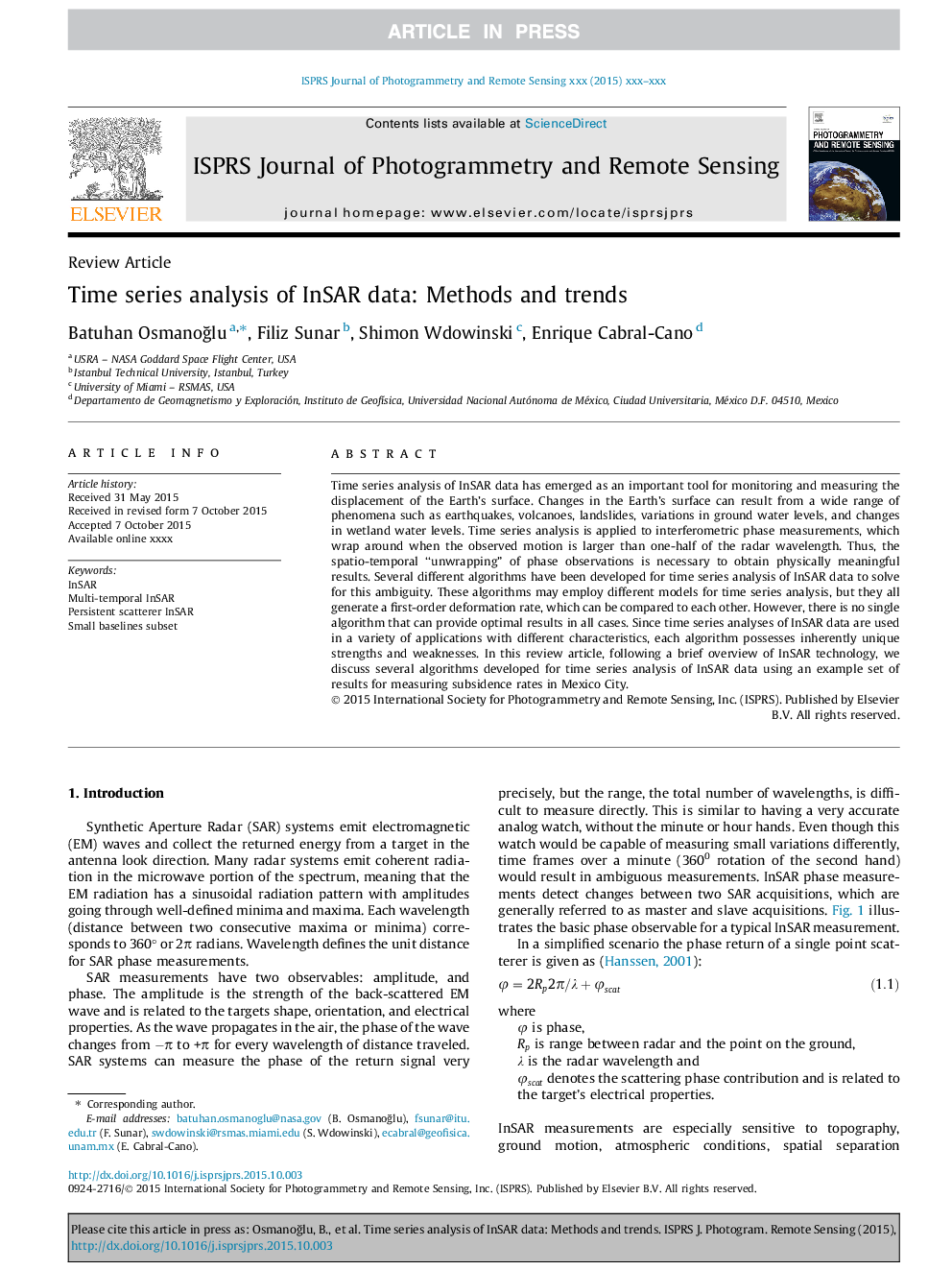| کد مقاله | کد نشریه | سال انتشار | مقاله انگلیسی | نسخه تمام متن |
|---|---|---|---|---|
| 6949336 | 1451259 | 2016 | 13 صفحه PDF | دانلود رایگان |
عنوان انگلیسی مقاله ISI
Time series analysis of InSAR data: Methods and trends
دانلود مقاله + سفارش ترجمه
دانلود مقاله ISI انگلیسی
رایگان برای ایرانیان
کلمات کلیدی
موضوعات مرتبط
مهندسی و علوم پایه
مهندسی کامپیوتر
سیستم های اطلاعاتی
پیش نمایش صفحه اول مقاله

چکیده انگلیسی
Time series analysis of InSAR data has emerged as an important tool for monitoring and measuring the displacement of the Earth's surface. Changes in the Earth's surface can result from a wide range of phenomena such as earthquakes, volcanoes, landslides, variations in ground water levels, and changes in wetland water levels. Time series analysis is applied to interferometric phase measurements, which wrap around when the observed motion is larger than one-half of the radar wavelength. Thus, the spatio-temporal “unwrapping” of phase observations is necessary to obtain physically meaningful results. Several different algorithms have been developed for time series analysis of InSAR data to solve for this ambiguity. These algorithms may employ different models for time series analysis, but they all generate a first-order deformation rate, which can be compared to each other. However, there is no single algorithm that can provide optimal results in all cases. Since time series analyses of InSAR data are used in a variety of applications with different characteristics, each algorithm possesses inherently unique strengths and weaknesses. In this review article, following a brief overview of InSAR technology, we discuss several algorithms developed for time series analysis of InSAR data using an example set of results for measuring subsidence rates in Mexico City.
ناشر
Database: Elsevier - ScienceDirect (ساینس دایرکت)
Journal: ISPRS Journal of Photogrammetry and Remote Sensing - Volume 115, May 2016, Pages 90-102
Journal: ISPRS Journal of Photogrammetry and Remote Sensing - Volume 115, May 2016, Pages 90-102
نویسندگان
Batuhan OsmanoÄlu, Filiz Sunar, Shimon Wdowinski, Enrique Cabral-Cano,